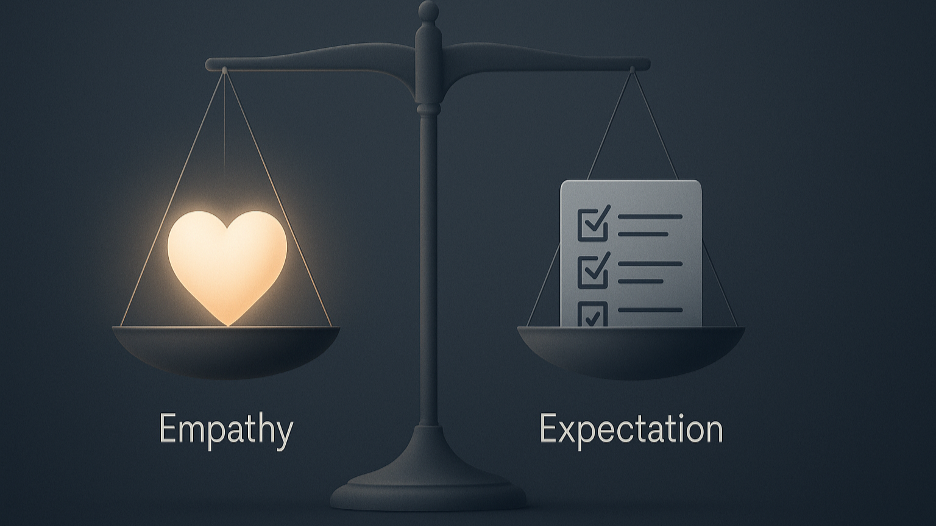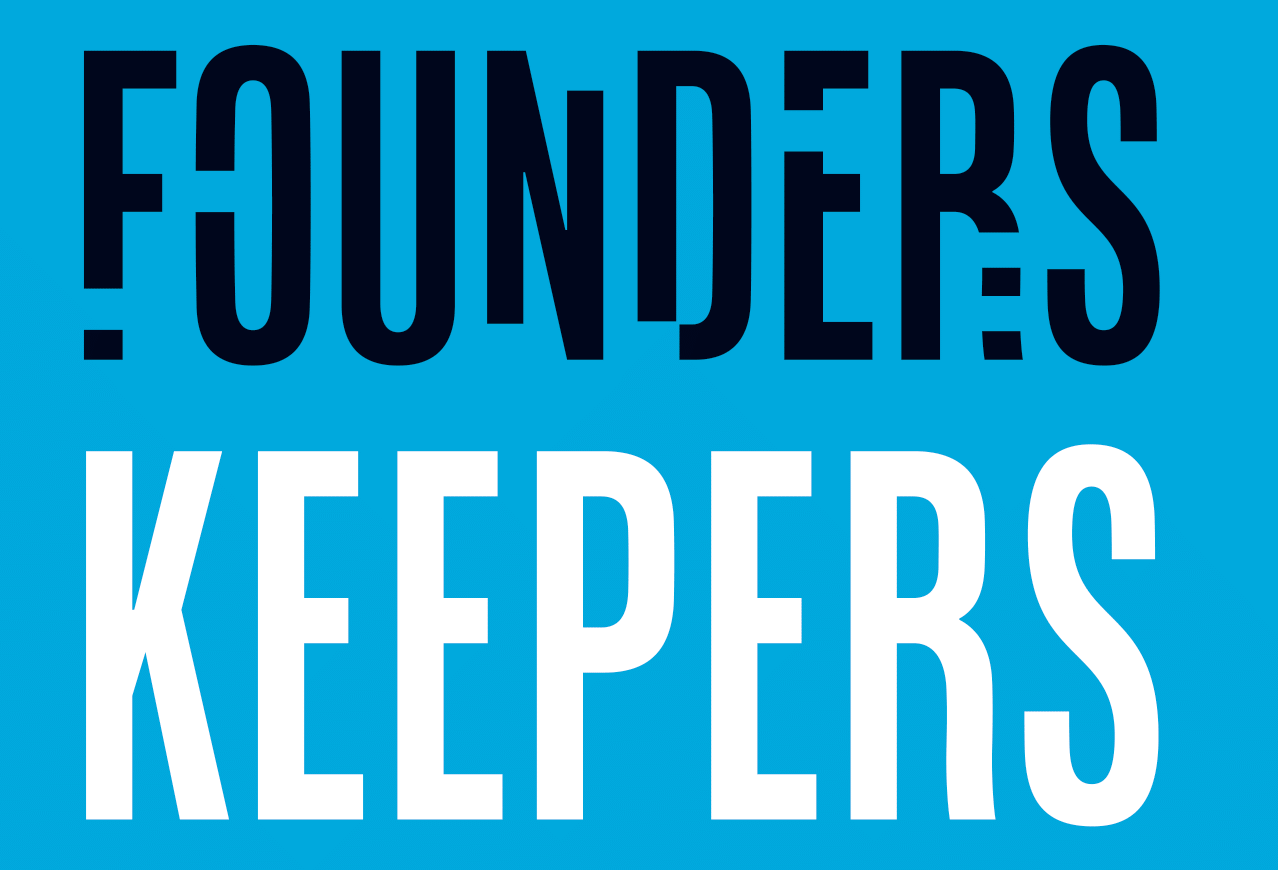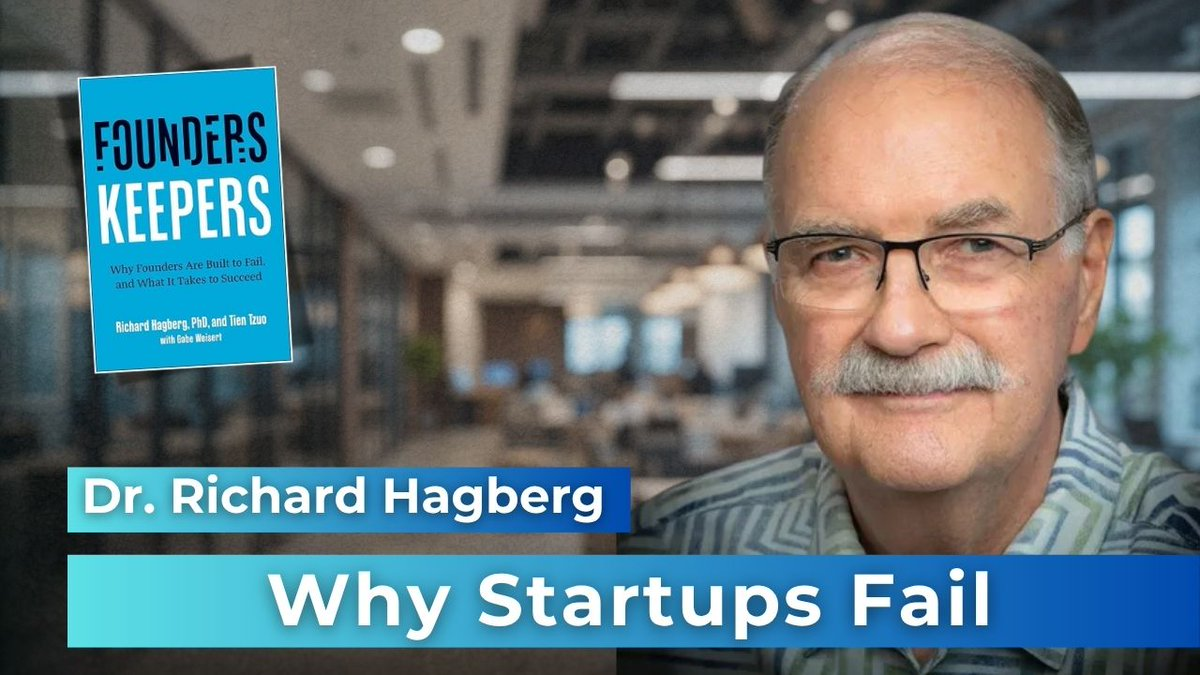Article
The Three Pillars of Leadership: Unlocking the Secret to Organizational Success
September 3, 2024

In business, success is a complex puzzle, and the most significant pieces are not just financial acumen or market opportunities—they are the leaders at the helm. I’ve spent decades dissecting what makes some leaders soar while others crash and burn. My research has revealed a one important conclusion: effective leadership is built on three fundamental pillars—The Visionary Evangelist, The Relationship Builder, and The Manager of Execution. These pillars are not just styles but skill sets that are the very lifeblood of an organization. If you want to understand why some companies thrive and others fade into obscurity, look no further.
The Visionary Evangelist: The Dreamer Who Dares Where there is no vision, the people perish—or at least, the company does. The Visionary Evangelist is the leader who sees the world not as it is, but as it could be. These are the Steve Jobs, Elon Musks, and Thomas Edisons of the world—people who, from the outside, seem to have been born with a prophetic ability to foresee the future. They don’t just think outside the box; they burn the box to ashes and build something entirely new.
Strengths:
The brilliance of a Visionary Evangelist lies in their unshakable belief in the impossible. They are the ones who can turn a seemingly absurd idea into a billion-dollar enterprise. Visionary Evangelists possess a magnetic charisma that draws people in and a relentless drive that pushes them to pursue their dreams no matter the obstacles. Their creativity is boundless, their energy infectious, and their ability to rally a team around a common goal is nothing short of miraculous.
Weaknesses:
But here’s the catch—Visionary Evangelists are often their own worst enemies. Their genius comes with a dark side. They are notoriously terrible at the mundane but crucial aspects of running a business. Details? Boring. Processes? Stifling. Execution? Someone else’s problem. This is why so many startups led by visionary founders stumble when it’s time to scale. They are brilliant at sparking the flame but terrible at keeping the fire burning. Their lack of focus on execution can turn a promising venture into a chaotic mess. In short, Visionary Evangelists can light up the world with their ideas, but without a solid team to catch and contain that lightning, they’re likely to burn the house down.
The Relationship Builder: The Glue That Binds In the cutthroat world of business today, where competition is fierce and the stakes are high, it’s easy to forget that companies are not just collections of assets—they are communities of people. Enter the Relationship Builder, the leader who understands that the strength of any organization lies in the bonds between its members. These leaders are the unsung heroes, the empathetic souls who quietly keep the ship sailing smoothly by ensuring that everyone feels valued and heard.
Strengths:
Relationship Builders are the emotional glue of any organization. They are the ones who know every employee’s birthday, who can defuse a tense meeting with a well-timed joke, and who instinctively understand what makes each team member tick. In a world increasingly dominated by remote work and digital communication, these leaders are more vital than ever. They are the ones who create a culture of trust and collaboration, who make people want to come to work every day, even when the work itself is challenging.
But don’t be fooled by their soft touch—Relationship Builders have a powerful impact. They are the reason people stay with a company through tough times, the ones who turn a group of employees into a true team. They are the heart and soul of an organization, ensuring that the people who make up the company are connected, motivated, and ready to go the extra mile.
For example, think about Satya Nadella, CEO of Microsoft, who transformed the company’s culture by emphasizing empathy, collaboration, and a growth mindset. Under his leadership, Microsoft has shifted from a cutthroat, competitive environment to one where teamwork and inclusivity are prioritized, leading to significant business success. Another great example of a Relationship Builder is Tony Hsieh, the late CEO of Zappos. Hsieh was known for his extraordinary emphasis on company culture and employee happiness, which he believed were key to the success of the business. His leadership style was built on trust, open communication, and fostering strong relationships within the organization
Weaknesses:
However, the very traits that make Relationship Builders so effective can also be their downfall. Their deep empathy and desire to avoid conflict can make them indecisive and overly accommodating. They may struggle with holding people accountable, fearing that tough love might damage relationships. In the pressure cooker of startup life, this can lead to a lack of discipline and accountability that undermines the entire organization. They can be so focused on keeping everyone happy that they lose sight of the bigger picture, becoming reluctant to make the hard decisions that leadership sometimes demands. In short, they can be too nice for their own good.
The Manager of Execution: The No-Nonsense Operator If Visionary Evangelists are the spark and Relationship Builders the glue, then Managers of Execution are the gears that keep the machine running. They are the pragmatic, detail-oriented leaders who take the grand ideas of the Visionary Evangelist and turn them into reality. These are the unsung warriors of the business world—the ones who ensure that the trains run on time, that budgets are met, and that projects are delivered with precision.
Think about Mary Barra, CEO of General Motors, as an example. Barra’s focus on execution and operational excellence has driven GM through a significant transformation, including the aggressive push towards electric vehicles. Her disciplined approach has helped GM stay competitive in an industry undergoing rapid change. Another modern example is Tim Cook, CEO of Apple, who succeeded Steve Jobs. While Jobs was the quintessential Visionary Evangelist, Cook is the epitome of a Manager of Execution. His meticulous attention to supply chain management and operational efficiency has allowed Apple to maintain its status as one of the most valuable companies in the world, even after the passing of its iconic founder
Strengths:
Managers of Execution are the backbone of any successful organization. They bring order to chaos, discipline to creativity, and focus to ambition. They are the ones who see the world in terms of processes, plans, and measurable outcomes. They are relentless in their pursuit of efficiency and are not afraid to make the tough decisions necessary to keep the organization on track. Their greatest strength is their ability to take a high-level vision and break it down into actionable steps that can be executed with military precision.
In the startup world, where the chaos of rapid growth can easily overwhelm even the best ideas, Managers of Execution are the ones who keep the ship from capsizing. They are the ones who ensure that deadlines are met, that resources are allocated efficiently, and that the organization remains financially viable. Without them, even the most brilliant startup is doomed to flounder.
Weaknesses:
But like the other pillars, Managers of Execution have their Achilles’ heel. Their focus on efficiency and control can lead them to become micromanagers, stifling creativity and innovation in their quest for order. They may become so obsessed with process that they lose sight of the ultimate goal, turning into bureaucrats rather than leaders. Their insistence on following the plan can make them inflexible and resistant to change, which is deadly in a fast-paced, dynamic environment. Moreover, their tendency to prioritize tasks over people can lead to a toxic work environment where employees feel like cogs in a machine rather than valued members of a team.
Why All Three Pillars Matter Here’s the ultimate my 40 years of research has uncovered: no single pillar is enough. The Visionary Evangelist, the Relationship Builder, and the Manager of Execution are all essential to the success of any organization, but each brings unique strengths and corresponding weaknesses. An organization led solely by a Visionary Evangelist may blaze bright but burn out quickly, undone by its inability to execute. A company dominated by Relationship Builders may be a great place to work but could falter without a clear vision or the discipline to deliver results. And a firm run by Managers of Execution may be efficient but soulless, marching toward mediocrity rather than greatness.
This is why the most successful organizations are those that cultivate all three pillars. It’s about balance. A great company needs the visionary spark to inspire, the relational glue to bind, and the operational rigor to execute. Each pillar supports the others, compensating for their weaknesses and amplifying their strengths.
The Founder’s Dilemma For founders, this balance is particularly crucial—and particularly challenging. Founders often excel as Visionary Evangelists, brimming with ideas and passion. But as their companies grow, the skills that made them successful in the early days—creativity, risk-taking, relentless energy—can become liabilities. Without the execution skills to scale operations or the relational skills to build a cohesive team, even the most brilliant founders can find themselves at the helm of a sinking ship.
This is why many startups struggle to transition from a scrappy, innovative startup to a sustainable, growing company. Founders must either develop the other pillars or, more realistically, bring in leaders who can complement their strengths. The best founders are those who recognize their limitations and surround themselves with a team that can fill in the gaps.
Leadership in Larger Organizations As companies grow, the need for leaders who embody all three pillars becomes even more critical. In a large organization, it’s not enough to be a visionary or a people person or an operational expert—you need to be all three, or at least understand how to lead a team that covers all these bases. Leaders who can only see through the lens of one pillar are doomed to fail in the complex, multifaceted world of big business.
The best leaders are those who can switch between these styles as the situation demands, who can dream big, connect deeply with their team, and deliver results—all at the same time. It’s a tall order, but those who can master this trifecta are the ones who leave a lasting legacy.
The Path to Lasting Success The Three Pillars of Leadership offer a roadmap for building a successful organization, but they also serve as a warning. Lean too heavily on any one pillar, and your organization may crumble. The real power lies in balance—in understanding the strengths and weaknesses of each leadership style and ensuring that your team has all three pillars represented. For founders and leaders alike, the message is clear: embrace your strengths, but don’t ignore your weaknesses. Surround yourself with people who can do what you can’t, and you’ll build an organization that’s not just successful but unstoppable. In the end, it’s not just about being a visionary, a connector, or an operator—it’s about being all of them, or knowing how to lead a team that is.
The Visionary Evangelist: The Dreamer Who Dares Where there is no vision, the people perish—or at least, the company does. The Visionary Evangelist is the leader who sees the world not as it is, but as it could be. These are the Steve Jobs, Elon Musks, and Thomas Edisons of the world—people who, from the outside, seem to have been born with a prophetic ability to foresee the future. They don’t just think outside the box; they burn the box to ashes and build something entirely new.
Strengths:
The brilliance of a Visionary Evangelist lies in their unshakable belief in the impossible. They are the ones who can turn a seemingly absurd idea into a billion-dollar enterprise. Visionary Evangelists possess a magnetic charisma that draws people in and a relentless drive that pushes them to pursue their dreams no matter the obstacles. Their creativity is boundless, their energy infectious, and their ability to rally a team around a common goal is nothing short of miraculous.
Weaknesses:
But here’s the catch—Visionary Evangelists are often their own worst enemies. Their genius comes with a dark side. They are notoriously terrible at the mundane but crucial aspects of running a business. Details? Boring. Processes? Stifling. Execution? Someone else’s problem. This is why so many startups led by visionary founders stumble when it’s time to scale. They are brilliant at sparking the flame but terrible at keeping the fire burning. Their lack of focus on execution can turn a promising venture into a chaotic mess. In short, Visionary Evangelists can light up the world with their ideas, but without a solid team to catch and contain that lightning, they’re likely to burn the house down.
The Relationship Builder: The Glue That Binds In the cutthroat world of business today, where competition is fierce and the stakes are high, it’s easy to forget that companies are not just collections of assets—they are communities of people. Enter the Relationship Builder, the leader who understands that the strength of any organization lies in the bonds between its members. These leaders are the unsung heroes, the empathetic souls who quietly keep the ship sailing smoothly by ensuring that everyone feels valued and heard.
Strengths:
Relationship Builders are the emotional glue of any organization. They are the ones who know every employee’s birthday, who can defuse a tense meeting with a well-timed joke, and who instinctively understand what makes each team member tick. In a world increasingly dominated by remote work and digital communication, these leaders are more vital than ever. They are the ones who create a culture of trust and collaboration, who make people want to come to work every day, even when the work itself is challenging.
But don’t be fooled by their soft touch—Relationship Builders have a powerful impact. They are the reason people stay with a company through tough times, the ones who turn a group of employees into a true team. They are the heart and soul of an organization, ensuring that the people who make up the company are connected, motivated, and ready to go the extra mile.
For example, think about Satya Nadella, CEO of Microsoft, who transformed the company’s culture by emphasizing empathy, collaboration, and a growth mindset. Under his leadership, Microsoft has shifted from a cutthroat, competitive environment to one where teamwork and inclusivity are prioritized, leading to significant business success. Another great example of a Relationship Builder is Tony Hsieh, the late CEO of Zappos. Hsieh was known for his extraordinary emphasis on company culture and employee happiness, which he believed were key to the success of the business. His leadership style was built on trust, open communication, and fostering strong relationships within the organization
Weaknesses:
However, the very traits that make Relationship Builders so effective can also be their downfall. Their deep empathy and desire to avoid conflict can make them indecisive and overly accommodating. They may struggle with holding people accountable, fearing that tough love might damage relationships. In the pressure cooker of startup life, this can lead to a lack of discipline and accountability that undermines the entire organization. They can be so focused on keeping everyone happy that they lose sight of the bigger picture, becoming reluctant to make the hard decisions that leadership sometimes demands. In short, they can be too nice for their own good.
The Manager of Execution: The No-Nonsense Operator If Visionary Evangelists are the spark and Relationship Builders the glue, then Managers of Execution are the gears that keep the machine running. They are the pragmatic, detail-oriented leaders who take the grand ideas of the Visionary Evangelist and turn them into reality. These are the unsung warriors of the business world—the ones who ensure that the trains run on time, that budgets are met, and that projects are delivered with precision.
Think about Mary Barra, CEO of General Motors, as an example. Barra’s focus on execution and operational excellence has driven GM through a significant transformation, including the aggressive push towards electric vehicles. Her disciplined approach has helped GM stay competitive in an industry undergoing rapid change. Another modern example is Tim Cook, CEO of Apple, who succeeded Steve Jobs. While Jobs was the quintessential Visionary Evangelist, Cook is the epitome of a Manager of Execution. His meticulous attention to supply chain management and operational efficiency has allowed Apple to maintain its status as one of the most valuable companies in the world, even after the passing of its iconic founder
Strengths:
Managers of Execution are the backbone of any successful organization. They bring order to chaos, discipline to creativity, and focus to ambition. They are the ones who see the world in terms of processes, plans, and measurable outcomes. They are relentless in their pursuit of efficiency and are not afraid to make the tough decisions necessary to keep the organization on track. Their greatest strength is their ability to take a high-level vision and break it down into actionable steps that can be executed with military precision.
In the startup world, where the chaos of rapid growth can easily overwhelm even the best ideas, Managers of Execution are the ones who keep the ship from capsizing. They are the ones who ensure that deadlines are met, that resources are allocated efficiently, and that the organization remains financially viable. Without them, even the most brilliant startup is doomed to flounder.
Weaknesses:
But like the other pillars, Managers of Execution have their Achilles’ heel. Their focus on efficiency and control can lead them to become micromanagers, stifling creativity and innovation in their quest for order. They may become so obsessed with process that they lose sight of the ultimate goal, turning into bureaucrats rather than leaders. Their insistence on following the plan can make them inflexible and resistant to change, which is deadly in a fast-paced, dynamic environment. Moreover, their tendency to prioritize tasks over people can lead to a toxic work environment where employees feel like cogs in a machine rather than valued members of a team.
Why All Three Pillars Matter Here’s the ultimate my 40 years of research has uncovered: no single pillar is enough. The Visionary Evangelist, the Relationship Builder, and the Manager of Execution are all essential to the success of any organization, but each brings unique strengths and corresponding weaknesses. An organization led solely by a Visionary Evangelist may blaze bright but burn out quickly, undone by its inability to execute. A company dominated by Relationship Builders may be a great place to work but could falter without a clear vision or the discipline to deliver results. And a firm run by Managers of Execution may be efficient but soulless, marching toward mediocrity rather than greatness.
This is why the most successful organizations are those that cultivate all three pillars. It’s about balance. A great company needs the visionary spark to inspire, the relational glue to bind, and the operational rigor to execute. Each pillar supports the others, compensating for their weaknesses and amplifying their strengths.
The Founder’s Dilemma For founders, this balance is particularly crucial—and particularly challenging. Founders often excel as Visionary Evangelists, brimming with ideas and passion. But as their companies grow, the skills that made them successful in the early days—creativity, risk-taking, relentless energy—can become liabilities. Without the execution skills to scale operations or the relational skills to build a cohesive team, even the most brilliant founders can find themselves at the helm of a sinking ship.
This is why many startups struggle to transition from a scrappy, innovative startup to a sustainable, growing company. Founders must either develop the other pillars or, more realistically, bring in leaders who can complement their strengths. The best founders are those who recognize their limitations and surround themselves with a team that can fill in the gaps.
Leadership in Larger Organizations As companies grow, the need for leaders who embody all three pillars becomes even more critical. In a large organization, it’s not enough to be a visionary or a people person or an operational expert—you need to be all three, or at least understand how to lead a team that covers all these bases. Leaders who can only see through the lens of one pillar are doomed to fail in the complex, multifaceted world of big business.
The best leaders are those who can switch between these styles as the situation demands, who can dream big, connect deeply with their team, and deliver results—all at the same time. It’s a tall order, but those who can master this trifecta are the ones who leave a lasting legacy.
The Path to Lasting Success The Three Pillars of Leadership offer a roadmap for building a successful organization, but they also serve as a warning. Lean too heavily on any one pillar, and your organization may crumble. The real power lies in balance—in understanding the strengths and weaknesses of each leadership style and ensuring that your team has all three pillars represented. For founders and leaders alike, the message is clear: embrace your strengths, but don’t ignore your weaknesses. Surround yourself with people who can do what you can’t, and you’ll build an organization that’s not just successful but unstoppable. In the end, it’s not just about being a visionary, a connector, or an operator—it’s about being all of them, or knowing how to lead a team that is.
share this
Related Articles
Related Articles

The Nicest Boss in the World He was adored. He remembered birthdays, checked in on people’s families, and stayed late helping fix slides no one asked him to touch. His team called him “the best boss we’ve ever had.” He was also running on fumes. Behind the warm smile was a leader quietly burning out — drowning in everyone else’s problems, too empathetic for his own good. If you’re a leader who prides yourself on caring deeply, this might sting a little: empathy, taken too far, becomes control in disguise. Empathy’s Secret Shadow Empathy is essential for leadership. It builds loyalty, safety, and trust. But the same trait that makes people feel seen can also make them dependent. When you can’t tolerate someone else’s discomfort, you start protecting them from it. You step in to fix, to soothe, to rescue. It looks noble. It feels generous. But it quietly steals agency — theirs and yours. Your team stops growing because you’re doing their emotional labor. You stop leading because you’re managing feelings instead of outcomes. That’s the hidden cost of care. The Emotional Guilt Loop Over-empathetic leaders live in a constant tug-of-war between compassion and guilt. They think: “They’re already stretched — I can’t pile more on.” “If I push harder, I’ll seem uncaring.” “I’ll just do it myself; it’s easier.” Sound familiar? That’s not empathy anymore. That’s guilt masquerading as kindness. And guilt makes terrible business decisions. Because guilt doesn’t guide you toward what’s right. It just steers you away from what feels uncomfortable. A Founder’s Story One founder I coached, let’s call her Lina, led with heart. She built her company around “people first.” And she meant it. But somewhere along the way, “people first” turned into “me last.” She couldn’t say no. She kept saving underperformers, approving vacations during crunch time, rewriting others’ work to spare them stress. Her team adored her — until they didn’t. Because beneath her helpfulness was quiet resentment. And resentment always leaks. The breakthrough came when she realized something simple but hard: “I was protecting people from learning the hard parts of growth.” That’s when she started leading again instead of parenting. When Caring Becomes Control Here’s the paradox: the more you care, the more you risk over-controlling. You jump in to fix not because you don’t trust them, but because you feel for them. It’s empathy turned inward — I can’t stand watching them struggle. But leadership isn’t about eliminating discomfort. It’s about using it wisely. People grow by stretching, not by being spared. When you save someone from every failure, you’re also saving them from competence. The Biology of Burnout Chronic empathy triggers chronic stress. When you absorb other people’s emotions all day, your nervous system never gets a break. You start mirroring everyone’s anxiety like an emotional amplifier. Your brain thinks you’re in crisis — even when you’re not. That’s why over-caring leaders are often the first to burn out. Their compassion becomes constant cortisol. The irony? The leaders who want to create safety for others end up unsafe themselves. How to Care Without Carrying Feel, then filter. It’s okay to feel someone’s frustration. Just don’t keep it. Ask: “Is this mine to hold?” Help through accountability. Say, “I know this is tough, and I also need you to take ownership.” The and matters. Let discomfort be developmental. When a team member struggles, resist rescuing. Stay present, not protective. Coach before you comfort. Instead of “Don’t worry,” try, “What do you think your next move is?” Reframe empathy as empowerment. Caring isn’t about absorbing pain; it’s about believing people can handle it. Funny but True One exec I worked with told me, “Every time I stop helping, I feel like a jerk.” I said, “No — you feel like a leader. It just takes a while to tell the difference.” He laughed and said, “So… you’re telling me leadership feels bad at first?” I said, “Exactly. Growth always does.” The Cultural Ripple Effect When leaders overfunction, teams underfunction. When leaders hold space instead of taking space, teams rise. Empathy should expand others, not consume you. The healthiest cultures balance care and candor — support and stretch. They normalize struggle as part of the process instead of something to be hidden or rescued. That’s what real compassion looks like in motion. The Maturity of Tough Empathy Empathy without boundaries is exhaustion. Empathy with boundaries is wisdom. The mature version of empathy doesn’t say, “I’ll protect you.” It says, “I believe you can handle this — and I’ll walk beside you while you do.” That’s not cold. That’s developmental. Your Challenge This Week Notice where you’re rescuing someone instead of coaching them. Pause before you step in. Ask yourself, Am I helping because they need it — or because I need to feel helpful? Then take one small risk: let them handle it. They’ll probably surprise you. And you’ll feel lighter than you have in months. Final Word Caring is beautiful. It’s what makes you human. But unchecked empathy turns leaders into emotional pack mules — carrying what was never theirs to bear. Real leadership is still full of heart. It just remembers that compassion without accountability isn’t love. It’s fear. And the moment you stop rescuing everyone, you finally start freeing them — and yourself.s)

The Smart Leader’s Blind Spot It’s strange how often the smartest people make the worst decisions under pressure. They don’t lose IQ. They lose perspective. I’ve seen this happen more times than I can count. A sharp, decisive executive starts second-guessing every move. They overanalyze, overwork, and overcontrol — all in the name of being “thorough.” They think they’re being rational. But underneath the spreadsheets and meetings is something far less logical. It’s fear. The Fear That Doesn’t Look Like Fear We think of fear as panic — sweating, shaking, obvious. But most leadership fear hides behind competence. It shows up as perfectionism, busyness, overcommitment, indecision. It sounds like, “Let’s get more data.” “Let’s not rush this.” “Let’s keep this one close.” That’s not analysis. That’s avoidance with a better vocabulary. When fear runs the show, the goal subtly shifts from making the right decision to avoiding the wrong one. And those two things are worlds apart. The Cost of Fear-Based Leadership When leaders operate from fear, everything tightens. They stop listening. They rush to defend. They play small when the company needs boldness. They keep people who are loyal over people who are competent — because loyalty feels safer. And here’s the real tragedy: the team starts copying the fear. They become cautious, compliant, quiet. Pretty soon, no one’s leading anymore. They’re all managing risk — mostly emotional risk. A CEO’s Moment of Truth One CEO I coached — brilliant, confident, deeply human — was terrified of being wrong in front of his board. He masked it well. On the outside: decisive. Inside: a constant hum of anxiety. After a tough quarter, he admitted, “I realized half my decisions weren’t based on strategy — they were based on protecting my image.” That moment of honesty was the start of his maturity curve. Once he could name the fear, it stopped running his show. He didn’t become fearless. He became aware. And awareness is what turns reaction into wisdom. Why Fear Feels Safer Than Clarity Fear has a strange way of convincing us it’s caution. Caution whispers, “Slow down and look.” Fear screams, “Don’t move.” The first sharpens judgment. The second paralyzes it. And the more we listen to fear, the more it disguises itself as prudence. That’s why emotional maturity isn’t about suppressing fear. It’s about being able to say, “Ah, that’s fear talking — not fact.” How Fear Distorts the Mind Here’s what happens when fear hijacks leadership: Tunnel vision: You fixate on the immediate threat and forget the big picture. Confirmation bias: You start looking for data that validates your anxiety. Short-termism: You make safe decisions that feel good now and cause pain later. Blame shifting: You protect your ego by pushing ownership outward. The mind gets smaller. The leader gets reactive. The company gets stuck. The Maturity Shift Emotional maturity isn’t about being unshakable. It’s about staying curious in the presence of fear. Mature leaders don’t pretend they’re fearless. They just don’t let fear make the decisions. They pause, breathe, and ask, “What part of this is data, and what part is my insecurity talking?” That single question can change everything. A Founder’s Story A founder I worked with once said, “I’m not afraid — I just have high standards.” But as we unpacked it, he realized those “high standards” were actually a way to control outcomes. He feared disappointment — his own and others’. When he finally stopped trying to protect his reputation and started protecting his clarity, his decisions got faster and cleaner. The business didn’t just grow — it started breathing again. Because when you stop trying to look right, you finally have room to be right. Funny, But True I once asked a CEO what he’d do differently if he weren’t afraid of failing. He said, “Probably the same things I’m doing now — just with less Advil.” That’s the thing: most leaders already know what to do. Fear just makes it hurt more. How to Lead Without Fear (Even When It’s There) Name it early. The sooner you recognize fear, the less power it has. Ask yourself, “What’s the story fear’s telling me right now?” Reframe mistakes as tuition. You’ll still pay for errors — might as well learn something from them. Separate identity from outcome. A bad decision doesn’t mean a bad leader. It means a leader who’s still learning — like everyone else. Keep one truth-teller nearby. Someone who loves you enough to tell you when you’re acting from ego. Practice micro-bravery. Tell one hard truth a day. Say “I don’t know” once a week. Let discomfort become strength training. The Paradox of Fear Fear doesn’t make you weak. It means you care. But if you never face it, it becomes your compass — and it always points backward. Courage, maturity, clarity — they’re not opposites of fear. They’re what happen when you stop running from it. Your Challenge This Week Next time you feel that knot in your stomach — before a board meeting, a tough conversation, a high-stakes call — pause. Ask yourself: What am I afraid might happen? Then ask: What might happen if I act from clarity instead of fear? That’s not therapy. That’s leadership hygiene. Final Word The mark of maturity isn’t fearlessness. It’s self-awareness. You can’t control your fear. But you can choose whether it sits in the driver’s seat or the passenger’s. Great leaders don’t wait for fear to disappear. They lead with it beside them — quietly, respectfully — but never in charge.

The Charisma Illusion Charisma gets all the press. It fills conference rooms, wins funding rounds, and dominates the LinkedIn highlight reel. We treat it like the gold standard of leadership — as if volume equals vision. But charisma is a sugar high. It spikes energy, then crashes trust. Composure, on the other hand — quiet, grounded, centered composure — is the kind of influence that lasts. It doesn’t light up a room; it settles one. When things go sideways, it’s not the charismatic leader people look for. It’s the calm one. The Crisis Test Picture this. The product just failed. The client’s furious. Your team’s pacing like trapped cats. Two leaders walk in. One storms into action — loud, fast, “What the hell happened here?” The other walks in slowly, looks around, and says, “Okay, let’s breathe. What do we know so far?” The first one gets attention. The second one gets results. That’s emotional geometry — the calmest person in the room reshapes everyone else’s state. Why Calm Is the Real Power When you stay composed, you’re not just managing your emotions — you’re regulating the entire system. Here’s the neuroscience behind it: people mirror the nervous system of whoever has the most authority. If you’re grounded, they sync to your rhythm. If you’re frantic, they sync to that instead. You don’t need to lecture anyone on resilience. You just have to model it. It’s not charisma that makes people trust you; it’s the quiet sense that you’re not going to lose your mind when things get hard. Charisma’s Half-Life Charisma is a spark. It can ignite a team — but if there’s no composure beneath it, the whole thing burns out. You’ve seen this movie before: the leader who rallies everyone with a passionate all-hands speech, then disappears into reaction mode when things get messy. Charisma without composure is like caffeine without sleep. You’re awake, but you’re not steady. Composure doesn’t get the applause. It gets the loyalty. A Founder’s Story One founder I worked with — I’ll call him David — was known for being a “high-voltage” guy. He could pitch an investor, fire up a crowd, or talk anyone into anything. But his team? They were walking on eggshells. His energy filled every room, but it left no oxygen for anyone else. During one session, I asked, “When you raise your voice, what happens to theirs?” He went quiet. That was the moment he understood that his passion — the thing he was most proud of — had become the team’s anxiety. A year later, his team described him differently: “He’s still intense, but steady. We trust him more now.” He didn’t lose charisma; he layered it with composure. The Calm Before the Influence Here’s what composure actually looks like: You listen longer. Because real influence starts with attention, not argument. You breathe before reacting. That pause isn’t weakness; it’s power management. You let silence do the work. Charisma fills every space; composure creates space for others to step in. You own your tone. You realize your sighs, your speed, your face — they’re all communication tools whether you intend them or not. You choose steadiness over certainty. People don’t need you to know everything. They just need to know you’re okay not knowing. Funny But True A client once told me, “When I’m calm in a meeting, people assume I’m hiding something.” I said, “Good. Let them wonder.” That’s how unfamiliar calm has become. In some cultures, composure looks radical — even suspicious. But it’s exactly what people crave in a world that never shuts up. Why Charisma Is Easier (and More Addictive) Charisma gets feedback. You see the energy rise, you feel the applause. It’s visible. Composure feels invisible — until you lose it. No one thanks you for staying calm during a crisis. But they remember it when deciding whether to follow you into the next one. That’s why maturity in leadership means getting comfortable with the quiet wins — the meeting that didn’t spiral, the argument that didn’t happen, the team that stayed focused because you did. The Emotional Geometry in Practice Think of composure as geometry because emotions move through space. When you enter a room, you alter its emotional shape. If you radiate calm, people’s shoulders drop. Their thinking widens. They start contributing. If you radiate stress, the room contracts. People shrink. Ideas vanish. Influence isn’t what you say. It’s the energy field you create. Your Challenge This Week Before your next high-stakes meeting, pause outside the door. Take one deep breath and ask yourself: What energy does this room need from me right now? Then bring only that. Nothing more. You’ll be amazed how fast everything slows down when you do. Final Word Charisma captures attention. Composure builds trust. One is about how loudly you shine; the other is about how steadily you glow. The leader who can stay centered when everyone else is spinning doesn’t just have influence — they are the influence. And that’s the kind of power that never burns out.
STAY UP TO DATE
GET PATH'S LATEST
Receive bi-weekly updates from the church, and get a heads up on upcoming events.
Contact Us








